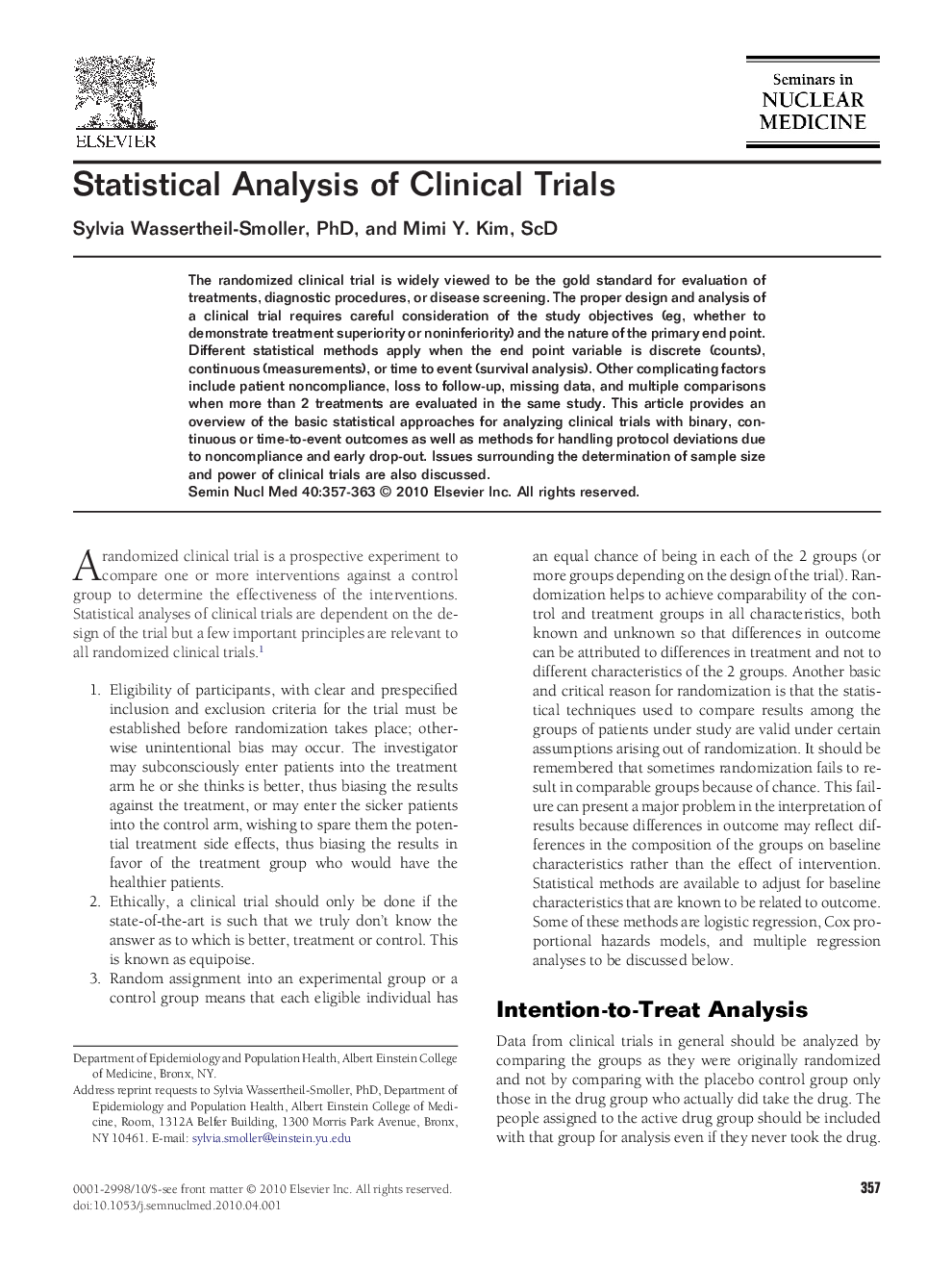| Article ID | Journal | Published Year | Pages | File Type |
|---|---|---|---|---|
| 4251192 | Seminars in Nuclear Medicine | 2010 | 7 Pages |
The randomized clinical trial is widely viewed to be the gold standard for evaluation of treatments, diagnostic procedures, or disease screening. The proper design and analysis of a clinical trial requires careful consideration of the study objectives (eg, whether to demonstrate treatment superiority or noninferiority) and the nature of the primary end point. Different statistical methods apply when the end point variable is discrete (counts), continuous (measurements), or time to event (survival analysis). Other complicating factors include patient noncompliance, loss to follow-up, missing data, and multiple comparisons when more than 2 treatments are evaluated in the same study. This article provides an overview of the basic statistical approaches for analyzing clinical trials with binary, continuous or time-to-event outcomes as well as methods for handling protocol deviations due to noncompliance and early drop-out. Issues surrounding the determination of sample size and power of clinical trials are also discussed.
